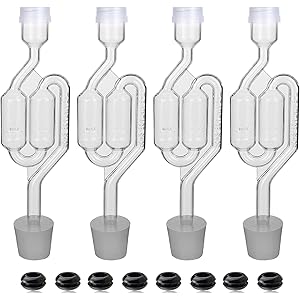Understanding Fermentation
Fermentation is a metabolic process that converts sugar to acids, gases, or alcohol in the absence of oxygen. It is an anaerobic process, meaning it occurs without oxygen, and is utilized by various microorganisms, including yeast and bacteria. This process is crucial in the production of many foods and beverages, such as bread, yogurt, and alcoholic drinks. Fermentation allows organisms to generate energy when oxygen is scarce, making it a vital survival mechanism.
Anaerobic Respiration Explained
Anaerobic respiration is a type of respiration that occurs without oxygen, similar to fermentation. However, it involves the complete breakdown of glucose to produce energy. In anaerobic respiration, organisms like certain bacteria and archaea utilize electron acceptors other than oxygen, such as nitrate or sulfate. This process yields less energy compared to aerobic respiration but is essential for survival in oxygen-depleted environments. Anaerobic respiration can lead to the production of byproducts like hydrogen sulfide or methane.
Aerobic Respiration Overview
Aerobic respiration, in contrast to both fermentation and anaerobic respiration, requires oxygen to produce energy. This process occurs in the mitochondria of cells and involves the complete oxidation of glucose to carbon dioxide and water. Aerobic respiration is highly efficient, generating up to 36 ATP molecules from a single glucose molecule. This energy production is critical for the survival of most eukaryotic organisms, including humans, as it supports various cellular functions and metabolic activities.
Comparing Energy Yield
When comparing fermentation with anaerobic and aerobic respiration, one of the most significant differences lies in energy yield. Fermentation typically produces only 2 ATP molecules per glucose molecule, while anaerobic respiration can yield slightly more, depending on the electron acceptor used. In contrast, aerobic respiration is the most efficient, producing up to 36 ATP molecules. This stark difference in energy production highlights the advantages of aerobic respiration in environments where oxygen is available.
Byproducts of Fermentation
The byproducts of fermentation vary depending on the type of fermentation process. For instance, alcoholic fermentation produces ethanol and carbon dioxide, while lactic acid fermentation results in lactic acid. These byproducts can have significant implications for food production and preservation. In contrast, anaerobic respiration can produce different byproducts based on the electron acceptor used, such as methane in methanogenic bacteria or hydrogen sulfide in sulfate-reducing bacteria.
Applications of Fermentation
Fermentation has numerous applications in food and beverage production. It is used to create products like beer, wine, yogurt, and sauerkraut, which rely on the unique flavors and textures developed during the fermentation process. Additionally, fermentation plays a role in food preservation, as the acidic environment created during fermentation inhibits the growth of spoilage organisms. Understanding fermentation is essential for food scientists and producers aiming to optimize these processes for better quality and safety.
Get more content like this!
Sign up to receive updates and new terms first hand.
Role of Microorganisms
Microorganisms are at the heart of fermentation processes. Yeasts, such as Saccharomyces cerevisiae, are commonly used in alcoholic fermentation, while lactic acid bacteria are crucial for lactic acid fermentation. These microorganisms not only facilitate the conversion of sugars into desirable products but also contribute to the flavor, aroma, and texture of fermented foods. Their metabolic pathways are finely tuned to thrive in anaerobic conditions, showcasing the intricate relationship between microorganisms and fermentation.
Environmental Conditions
The environmental conditions play a critical role in determining whether fermentation, anaerobic respiration, or aerobic respiration occurs. Fermentation typically takes place in environments devoid of oxygen, such as sealed containers or deep sediments. In contrast, anaerobic respiration can occur in various environments, including soil and the intestines of animals. Aerobic respiration, on the other hand, requires oxygen-rich environments, such as the lungs of animals or the surface of water bodies, where oxygen is readily available.
Industrial Fermentation Processes
Industrial fermentation processes leverage the principles of fermentation to produce large quantities of products, including biofuels, pharmaceuticals, and food additives. These processes are carefully controlled to optimize yield and efficiency, often involving the use of bioreactors that maintain ideal conditions for microbial growth. Understanding the differences between fermentation and other metabolic processes, such as anaerobic and aerobic respiration, is essential for engineers and scientists working in biotechnology and related fields.
Future of Fermentation Research
The future of fermentation research is promising, with ongoing studies exploring new applications and improvements in fermentation technology. Researchers are investigating ways to enhance fermentation efficiency, reduce byproduct formation, and develop novel fermentation processes for sustainable production. As the demand for alternative proteins, biofuels, and functional foods increases, understanding the nuances of comparing fermentation with anaerobic and aerobic respiration will be crucial for advancing this field.




